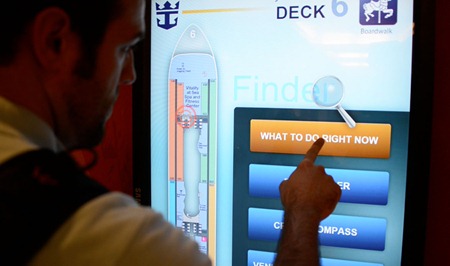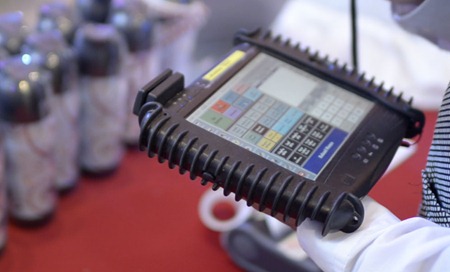Riding the Wave of Intelligent Systems on the High Seas
Posted By Barb Edson
General Manager, Marketing and Business Development
If you’ve seen the World of Windows video, you’ve seen how many embedded devices can fit into a given day (assuming you are really busy that day), but, during a recent trip to Ft. Lauderdale, I saw what may be one of the biggest uses of Microsoft technology. And I can’t over emphasize the size of it.
At nearly a quarter mile long, Royal Caribbean has built the two biggest cruise ships in the world – the Oasis of the Seas and Allure of the Seas. To put that size in perspective, the Oasis of the Seas can cast a shadow on a 20 story building while stretching across four football fields – and there’s capacity for 8,600 people.
As the General Manager of Product Marketing at Windows Embedded, I make it a priority to visit our partners and see intelligent systems in action – and the intelligent system built by the team at Royal Caribbean is remarkable to see in person.
Passengers can use touch-enabled screens to locate restaurants, pools, or discover other fun activities on board the vessel.
At every stage of the cruise, you can find Windows Embedded technology helping to improve the passenger experience. A short list includes: Scanners and kiosks that help passengers check-in and board the ship quickly rather than standing in lines, digital signs throughout the ship help guests find activities and restaurants, a complex array of sensors that monitor food safety in the galleys, tablets that guests use to sign waivers for activities like rock climbing or flowriding (that’s not me in the video, I promise), and handheld terminals throughout the ship which can securely process transactions made poolside.
What’s particularly impressive about Royal Caribbean’s intelligent system is the amount of planning that went into it.
Long before the boat’s construction was complete, the IT team was hard at work. They began with the goal of exceeding the expectations of every passenger, and, to do this, they decided to use technology in new ways and in new places. The goal was to solve common problems like how to make it easy to find an open table at a restaurant, easy to buy tickets to a concert, easy to find photos, and easy to avoid lines. Sense a theme? With dozens of scenarios like these in mind, the IT team carefully analyzed the needs of guests, and this information allowed them to select exactly which embedded devices were necessary, the type of IT infrastructure required to support them, and what kinds of real-time data their intelligent system needed to process.
Staff use rugged handheld devices like this one to streamline passenger services.
The result is a guest experience that leads the industry. You can see more in the video above and learn how Royal Caribbean is benefitting from its use of Microsoft. And I was happy to read about a reporter’s recent experience on Oasis of the Seas.
Now that I’m back, I’m looking for new intelligent systems to go see for myself. Any ideas?

